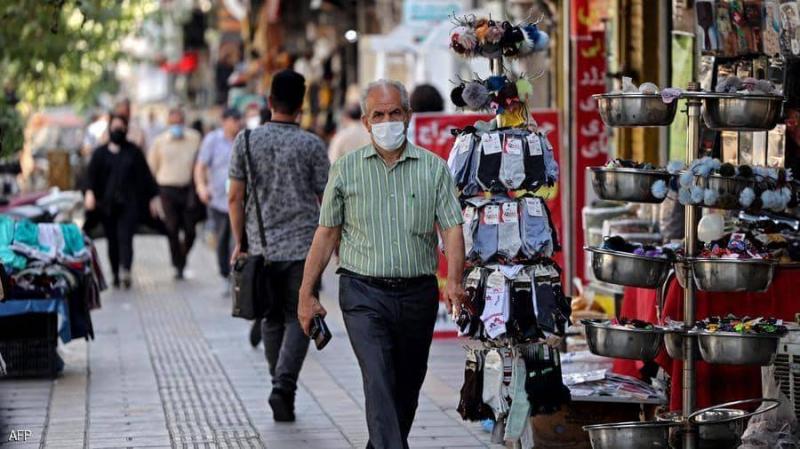Under the title "Delta Variant Casts 'Red Alert' Over Iran," Sky News Arabic published a report noting that alongside crises such as electricity outages, the inability of government institutions to pay monthly salaries to employees, and general strikes in various sectors, Iran is heading towards a new wave of the coronavirus pandemic, specifically from the highly contagious Delta variant. The Iranian Ministry of Health announced on Thursday that it recorded 23,000 new cases in different parts of the country, particularly in the capital Tehran, marking an extremely dangerous situation according to all current global statistical standards.
According to the semi-official Iranian news agency Tasnim, 27 Iranian cities have been added to the list of "red alert" areas, indicating that various regions, especially the densely populated northern, northwestern, and southeastern parts of Iran, have fallen into this situation. In areas such as Tehran, Fars, Khorasan, Mazandaran, and Isfahan, the outbreak has reached its peak. These high-risk areas add to nearly 400 other Iranian cities and regions, which are experiencing outbreak conditions ranging from "orange to yellow," with only small percentages of infected individuals separating them from the red stages.
The levels of outbreak have pushed most of the traders and operators of the "Grand Bazaar of Tehran" to close their shops and public businesses, while commercial establishments with more than 100 workers await a decision from government authorities regarding closure. These closures coincided with similar decisions in regions such as Balochistan, Sistan, Bandar Abbas, and Zahedan, which some local media outlets described as having turned into "ghost towns."
The government authorities in those areas have done nothing beyond declaring a state of emergency, in anticipation of any public unrest due to the overall conditions. Social classes in these areas have expressed their dissatisfaction with the government's lack of incentives for the poorest and those most affected by the outbreak and market closures.
Iranian authorities, through outgoing President Hassan Rouhani, acknowledged the difficulties facing the country amid this pandemic wave, stating in televised remarks: "I fear we are on the path to the fifth wave across the country." However, he did not provide any vision regarding his government's plans or the general approach in the country to confront the new wave, aside from urging more caution, stating: "We must be more careful in the southern provinces, as the Delta variant has spread."
According to global statistics, Iran has been one of the countries with the highest death rates relative to its population over 20 months of the coronavirus pandemic. The number of deaths has exceeded 325,000 out of approximately 30 million infections across the country, representing more than 0.5 percent of the population.
Iranian researcher specializing in internal affairs, Reza Haq Gholami, explained in an interview with Sky News Arabic the implications and impact of this situation in Iran. He stated: "Ultimately, this indicates that the internal system governing the country represents a failed apparatus that cannot adopt any vision to understand Iran's problems and find objective solutions." He continued: "Firstly, the Iranian regime is not concerned about that, as it gives no consideration to its citizens and their pains; it does not feel any pressure from the population, believing that any pressures or attempts at mobilization can be crushed with force."
He added: "Also, the political mind of the regime is occupied with many external issues, in countries and regions, sending warships to the world’s oceans and insisting on spending billions of dollars on developing nuclear weapons projects, without any comparison between these files and the urgent domestic issues in the country."
Iranian authorities often blame U.S. and international sanctions, which they say prevent them from obtaining medicines and medical supplies and fortifying the health sector's infrastructure in the country. However, digital data refutes the claims of Iranian authorities in this direction, as the health quality in Iran ranks 54th globally, according to World Health Organization data. Despite being an oil-producing country for the past three-quarters of a century, its health sector is the worst compared to countries with similar income levels, with a total of only 150,000 beds in public hospitals, approximately 1.1 doctors per thousand people, and an average life expectancy of just 76 years for Iranian citizens.




